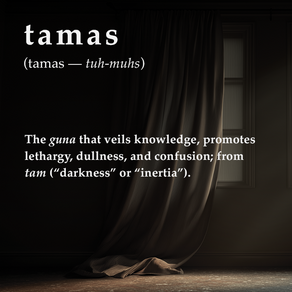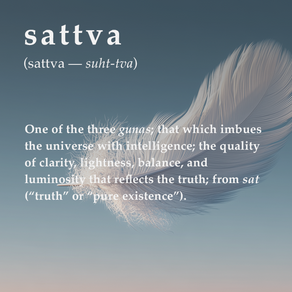top of page
ESSAYS
Search


The American Mind - How the Gunas Shaped a Culture
A Vedantic analysis of the American psyche, revealing how rajas and tamas have shaped the nation’s myths, leaders, temperament, and cultural destiny.


Why Do Sages Say the World is Perfect As It Is?
A provocative Vedantic essay exploring why the world, with all its chaos and contradiction, is exactly as it must be. Through vivid thought experiments, it reveals that perfection lies not in goodness but in completeness — that even ignorance, suffering, and death are necessary conditions for experience itself.


The Gunas of History: The Law of Opposites
A contemplative essay tracing the rise and fall of civilizations through the three gunas—rajas, tamas, and sattva—and how each age contains the seed of its opposite. From industrial ambition to digital exhaustion, history moves by polarity, yet within the chaos one can still cultivate a sattvic micro-climate of clarity and steadiness.


Do Not Mistake Smoke for Sky - An Imagined Interview with Shankaracharya on the Fall of a Nation
An imagined interview with Shankara on a once-powerful nation in decline. His timeless Vedantic insights reveal why societies collapse and why the Self remains untouched.


The Rhyme of History
An essay exploring history as recurring pattern, not linear progress—how fascism, revolutions, and upheavals “rhyme” across centuries, and how Vedanta offers dispassion amidst chaos.


Tamas - The Guna of Darkness and Inertia
Tamas is the guna of inertia, veiling, and heaviness. It obscures knowledge, breeds lethargy and confusion, yet also provides stability and rest. In Vedanta, tamas must be transformed into sattva to prepare the mind for Self-knowledge.


Rajas - The Guna of Activity and Restlessness
Rajas is the guna of movement, passion, and projection. It drives action but binds the mind through desire and dissatisfaction unless guided by dharma and Self-knowledge.


Svabhava - Nature as Temperament, Nature as Essence
Svabhava means “one’s own nature.” In worldly life it refers to tendencies shaped by gunas. In Vedanta, one’s absolute svabhava is identical with svarupa — Brahman, pure existence-consciousness-limitlessness.


Triguna Yoga - The Yoga of the Three Strands of Nature
Triguṇa yoga is Krishna’s teaching in the Bhagavad Gita about sattva, rajas, and tamas. By observing their play and cultivating sattva, the seeker prepares for Self-knowledge, ultimately recognizing the Self as beyond all guṇas.


Sattva — The quiet light that prepares the mind for freedom
We praise the "light," but rarely understand it. Sattva is not morality, though it favors goodness. It is not peace, though it brings calm. It is not wisdom, though it makes knowledge possible. It is light—subtle, luminous, and intelligent. It is the quality of clarity in a mind, the reflective power that allows awareness to be known. Without sattva , even the most noble teaching remains opaque. With it, a single word can pierce illusion. Sattva is one of the three gunas ,


The Gunas — The Three Forces of Nature
There is a strange weather in the mind. Sometimes clear, sometimes agitated, sometimes heavy with fog. These fluctuations are not random—they are the play of the gunas, the three powers of maya: sattva, rajas, and tamas. These universal forces shape not only the cosmos but also our thoughts, emotions, and desires. Understanding them is key to managing the mind and stepping out of its spell.
bottom of page
